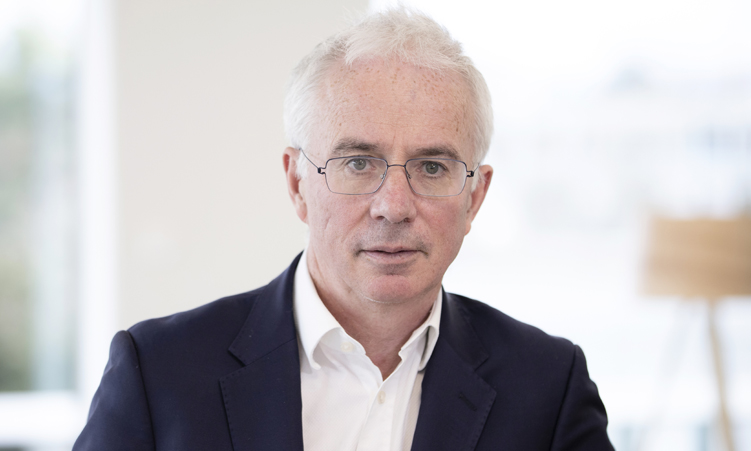Among the most shocking images from the Covid-19 pandemic were of people gasping for air, unable to breathe, their blood oxygen so severely depleted that some died in ambulances lined up outside hospitals.
In wealthier countries, there was a panicked rush to expand ventilator capacity to deal with the surge of people experiencing acute respiratory distress.
In countries like India and Kenya, there was an even more desperate scramble to find oxygen cylinders for loved ones.
In low- and middle-income countries, nine out of 10 hospitals lacked the equipment to provide oxygen therapy.
Seeing people dying for lack of oxygen, the Global Fund to Fight AIDS, Tuberculosis, and Malaria, Unitaid, USAID, and other global agencies took action.
Under the umbrella of the Access to Covid-19 Tools Accelerator, the Oxygen Emergency Taskforce was established to coordinate the emergency response, broaden access and secure supplies.
Since then, the taskforce has overseen an investment exceeding US$1 billion for oxygen-related needs, primarily via the Global Fund Covid-19 Response Mechanism (C19RM).
These funds have gone toward procuring oxygen cylinders and bulk storage tanks, installing oxygen production machines (known as pressure swing adsorption plants), and offering specialised training for health workers.
A CONSTANT LIFESAVER
Tragically, this response came too late for too many people, because the peak of the pandemic coincided with a worldwide shortage of oxygen cylinders. Furnishing a hospital with a sustainable oxygen supply takes many months, given the need to install sophisticated equipment and pipework; and training health workers to provide oxygen safely cannot be done overnight.
Following the acute phase of the pandemic, the Oxygen Emergency Taskforce’s focus shifted toward ensuring greater access to medical oxygen on a sustainable basis, so that what happened with Covid-19 is never repeated.
Moreover, there is a compelling case for expanding access to medical oxygen even without the threat of a pandemic.
Lack of oxygen in low- and middle-income countries leads to 800 000 preventable deaths every year.
Newborn babies die of respiratory distress syndrome. Mothers die when complications in childbirth result in hypoxemia.
Acute trauma victims – from violence or traffic accidents, for example – also die from lack of oxygen.
Surgical procedures for a wide range of conditions, including cancer, cannot be carried out without medical oxygen.
It would be difficult to identify a better example of an investment that simultaneously reinforces pandemic preparedness and saves lives now. Research by the Every Breath Counts Coalition shows that hospitals that offer paediatric care with a fully functioning supply of oxygen can reduce deaths due to child pneumonia by almost half, and all children’s deaths by one-quarter.
AMBITIOUS EFFORT
To maintain the pace of progress in expanding access to medical oxygen, the Global Fund and Unitaid, alongside other partners, have transformed the Oxygen Emergency Taskforce into a Global Oxygen Alliance, known as GO2AL.
Its objectives are to provide financial support for oxygen production and supply, comprehensive technical and training assistance and advocacy for equitable access.
National governments are also taking the lead.
For example, this past April, Kenyan president William Ruto and county governors set aside US$41,7 million for a programme to distribute medical oxygen cylinders and bulk storage tanks to the country’s healthcare centres.
With the support of the Global Fund and other partners, Kenya is also building a nationwide network of oxygen-production plants, bulk-storage tanks, and cylinder distribution channels to ensure that hospitals and primary-care facilities have sufficient supplies.
Far too many people died from lack of oxygen during the Covid-19 pandemic, and far too many are dying unnecessarily today from other conditions because medical oxygen is not routinely available.
That is why we have embarked on the most ambitious effort yet to increase access to medical oxygen in low- and middle-income countries.
ACCESS
To date, and thanks to the generosity of donors led by the United States and Germany, the Global Fund has invested US$617 million to support 98 countries and six regional projects in their efforts to increase access to oxygen.
Doing so will save millions of lives and significantly improve low- and middle-income countries’ ability to respond to future disease threats.
Sadly, nothing will bring back the people who died gasping for air. But owing to our unified response to Covid-19, millions of others can be spared a similar fate.
- Peter Sands is executive director of the Global Fund
– Copyright: Project Syndicate, 2024
Stay informed with The Namibian – your source for credible journalism. Get in-depth reporting and opinions for
only N$85 a month. Invest in journalism, invest in democracy –
Subscribe Now!






